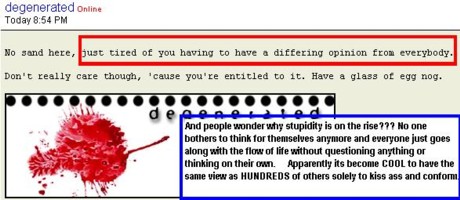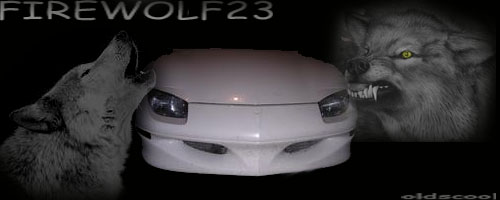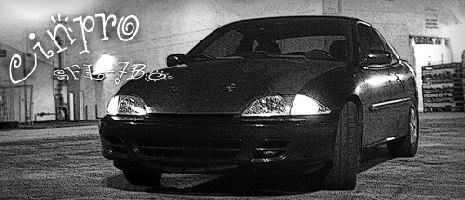swaybars limit the amount the stock trailing axle ARMs flex. they def are effective. not sure if you have a swaybar, but the effect is highly noticable.
the factory bar does not take into effect the length of the arms which is a part of a swaybar... its ONLY welded under the V bar. for a swaybar to be effective, it needs A,B,and C which are the main long portions of the bar, as well as the arms that will extend from the bar. heres the equation for it.
<img src="http://tiger.towson.edu/~apittm1/sway.JPG">
the metal rod welded in factory, does not really do much at all, besides stabilize the long middle part of the trailing arm simply making it sturdy. the arms are where the leverage begins Points A and C in the diagram. the welded bar is affected VERY little by that, hence the reason almost EVERY swaybar company are making bars ATLEAST 22mm for ALL cavaliers. hellwig is oldschool, and was 19mm, but look around. rksport, eibach, mantapart, progressive technologies, addco, the last hellwig made...
all 22mm or larger rear bars. and its made for all cars.
when they made the trailing arm V shaped middle bar, back in the day it was thicker,(should see the one on my 83 cimmaron)
as time went on, it got thinner and more holes hence the reason for the bigger welded in bar. progressing over the years.... less material overall, but able to make it lighter, but just as strong.
Quote:
To the best of my knowledge the twist beam design is semi-independent. this means that the two wheels act seperately to a given point, then act as a solid axle. so there must be a difference in the movement of each arm and therefor the tie bar would bind up the mechanism. or at least affect the toe setting.
yes semi independent, however if you use a flat bar, then it does bind up the movement.
with rod ends it allows movement freely. heim joints have been used on many race vehicles, some of the most well known being monster trucks....
wheel travel there can be upwards of 38 inches per side, and heim joints allow for the 4 link bars to attach to the axles, however it allows for movement of over 3 feet. and it definately keeps the same distance between the two points of contact.
hence the main reason for usin em. and on affecting toe setting, not really. mainly the goal is to keep it parrallel. as shown in the diagram when something flexes, you decrease the stiffness of the swaybar.... similar to when zach posted recently that he gained oversteer from adding a tie bar.... technically he increased the effectiveness of the swaybar, so the oversteer was a product of not flexing making the swaybay do its job as effective as possible
http://www.j-body.org/forums/read.php?f=3&i=87725&t=83466&start=25 second post.
so if you go round a corner and your outside wheel flexes in a bit, you can be assured the inner wheel on the rear is parrallel to it. the trailing arms are kinda spring loaded. flexing it in, its not brittle to where it breaks, but not malleable to where it gets stuck like that. so when your outside arm/wheel starts to flex in, the bar attached to the other side, actually uses the spring loaded force of the other arm, to remain straight at all times to keep both wheels straight.
think of it as 2 points resisting the same force is better than just 1 point.

Quote:
one more thing to think about. if the left side pushes in then the tie bar would push the right side out. correct? so the tie bar would cause both arms to move instead of just the one that is doing the majority of the cornering. which is safer? maybe we should start a different thread for this?
nope it wouldnt push out like you may think.. or to a large degree. cause if you are traveling at a speed in a corner to push the left side in, the the right side is ALREADY pushing out. like said, its clawing towards the inside to gain traction. you are just trying to keep them both consistent, similar to a strut brace or subframe brace. same motive, however since the trailing arm does allow twist, bearings are needed so there isnt a restriction of any kind.
self demo, tuck the middle and ring finger under you thumb and leave your pinky and index finger straight out... like making the rock and roll, "rock out and show me your devils" hand signal people do all the time especially at concerts.
place both of your extended fingers on a flat surface and move your hand left and right.
with your right hand, when you move it to the right, your pinky is pushing in. your index finger wants to push out towards the left (grabbing FROM the side its comming from opposite of where its going to)
when you switch directions, your index finger is now trying to resist pushing in, while your pink now has to resist pushing out.
like said in a turn, a single bump can jolt the car enough to where the wheel on the outside of the turn pushes inward sharply, if this would occur and the inner wheel stays the same, the car would undergo a quick time period of toe out overall.
hope that explains it better, if not, i can break out the diagrams from the books i have

prob be better to keep it here rather than spread it all out over a few posts.













